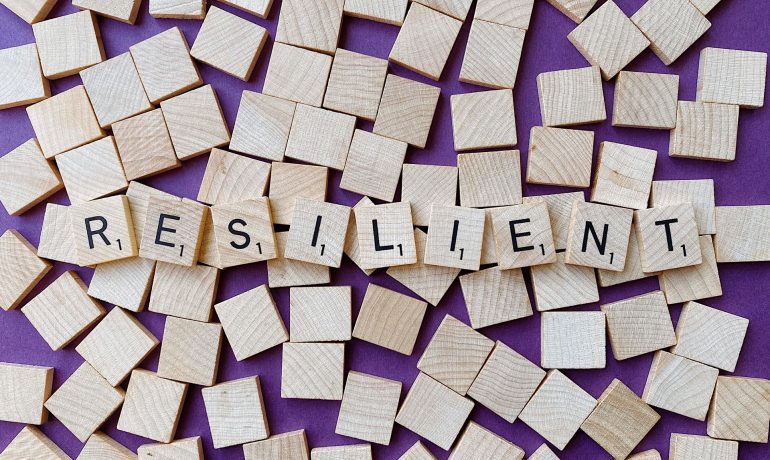The uncertainty generated by the pandemic has led McKinsey to follow BCG’s attempt, that we commented on previously, and focus on resilience. Their recent report, “Succeeding in uncertain times”, identifies six dimensions of resilience and proposes ways of changing your organisation to become more so.
The basic premise is that the future is becoming less predictable, so it is not possible to develop plans to respond to every eventuality. Instead, organisations should aim to be in a position to cope with whatever gets thrown at them. McKinsey suggest different capabilities needed to be able to respond effectively to a wide variety of challenges.
Financial resilience
Organisations should balance long- and short-term financial objectives, and have sufficient reserves to weather financial shocks, whatever the cause. This is the basis of Bank of England “stress tests”, and begs the question: “how much is enough?”.
Operational resilience
This covers flexible production capacity, and supply chain substitutability. This may well require extra investment to build spare or redundant capacity and in-depth analysis of suppliers’ risk profiles. McKinsey don’t discuss the trade-offs implicit in this.
Technological resilience
McKinsey focus on IT infrastructure – on which virtually all organisations depend these days – and the risk of breakdowns and cyber-attacks. Business continuity plans and disaster recovery capability are their proposed responses – surely a standard across most industries.
Organisational resilience
McKinsey recommend a diverse, high-skilled workforce, operating in a culture of fast and agile decision-making within a set of “thoughtfully developed” rules and standards. Dancing unicorns are good too.
Reputational resilience
I thought this was one of the more interesting areas to explore. Reputational pressures on organisations of all kinds are increasing. Environmental, social, and governance (ESG) policies are coming under increasing scrutiny. In a crisis, can you stick to these principles, or will you fall back on more basic corner-cutting? How well are you able to communicate with stakeholders, how transparent are you prepared to be when things are really difficult?
Business-model resilience
Innovation and entrepreneurship are required to respond to fundamental shifts in market dynamics. There should be a portfolio of alternative approaches in nascent form that can be called upon in a crisis.
McKinsey go on to discuss anticipation and response. Anticipation through scenario creation is of course where SAMI focusses. McKinsey identify several areas of uncertainty related to the six dimensions for which contingency plans should be identified: supply-chain disruptions; cyberattack; physical climate-risk events; technical change; macroeconomic downturns; geopolitical disruption; major regulatory shift. Clearly not everything can be anticipated – there are genuine “black swans” – but in practice the limitation is not so much imagination but willingness to address unpalatable potential futures. Optimism bias is common to many executives and Boards.
How the organisation responds to a crisis can make the difference between success and failure. McKinsey suggest that top-quintile performance through the global financial crisis (2007–11) outperformed other companies in 2017 by more than 150 percentage points. Personally I’m not sure what that type of statistic actually means and how it helps organisations prepare.
They do suggest that resilience needs to be “baked in”. This springs from a diversity of skills and experience, fostering of innovation and creative problem solving. These characteristics are helpful in good times and indispensable when quick, collaborative adaptation is needed for an institution to thrive. Institutions should link resilience to existing enterprise-risk-management processes and should consider investment in anticipation and response capabilities.
McKinsey consider a range of industry sectors and identify “Resilience capabilities” and “Surprise gaps” for each. I’d suggest that companies in those sectors should already have the “surprise gaps” covered, and that McKinsey are being rather conservative in the range of challenges that could emerge.
One aspect of resilience overlooked is that of timescales. Not every aspect of your organisation can be completely agile, flexible and responsive – some things need time to adapt to new circumstances. For those, more thought about future change is needed in advance.
Their emphasis – as with many such analyses – is on threats, and they pay little or no attention to unexpected opportunities, other than to argue that responding better than your competition gives you an advantage. Still less do they consider Taleb’s “anti-fragile” approach, where coping with the challenge makes you stronger than before. The motto “never waste a good crisis” certainly has power. Examples from the pandemic could be organisations that have pulled together emergency teams at short notice and have built new skills and capabilities in their staff. The NHS for one does seem to be actively trying to do this.
Written by Huw Williams, SAMI Principal
The views expressed are those of the author(s) and not necessarily of SAMI Consulting.
Trusted strategic foresight techniques help you make better decisions today and ensure your future success. Since its founding in 1989 by Shell and St Andrews University, SAMI Consulting has delivered scenario planning projects nationally and internationally and provided the link between futures research and strategy enabling organisations to take “robust decisions in uncertain times”.
If you enjoyed this blog from SAMI Consulting, the home of scenario planning, please sign up for our monthly newsletter at newreader@samiconsulting.co.uk and/or browse our website at https://www.samiconsulting.co.uk
Image by Wokandapix from Pixabay



[…] our last three blogs have been focussed on almost exactly this (here, here and here), we’ve had a fair bit of time to think about Turner’s […]
[…] recent posts (here, here and here) we have looked at building corporate or government “resilience” as a way of […]